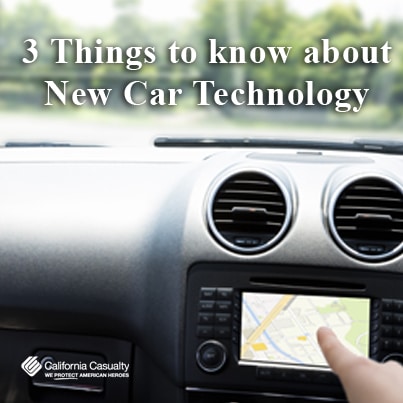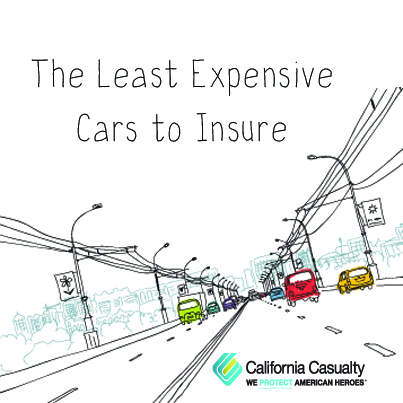by California Casualty | Firefighters |
by Nick Magoteaux
Fighting fire in a rural environment is much different than fighting fire in an urban or suburban environment. Firefighters face many challenges in the rural setting, like lack of water, extended response time, and lack of manpower, just to name a few. Unlike urban or suburban area, rural areas do not have hydrants so this means firefighters must bring water to fight the fire. Many rural fire departments depend on volunteer firefighters, which in many cases respond from home to the fire station and then go to the fire. This factor and distance from the firehouse can lead to extended response times. Finally, and almost most importantly, is the lack of manpower. Volunteerism is unfortunately slowly dwindling away putting a strain on volunteer fire departments.
According to the United States Fire Administration, volunteer firefighters have declined by 13% or more. This has caused many fire departments to resort to hiring fire and EMS personnel to staff the station during the day or around the clock. This leaves many departments struggling to operate. Many volunteer or part time fire departments struggle to purchase or replace needed equipment due to tight budgets. Federal resources are drying up and taxpayers are less likely to approve higher funding for fire departments. This leaves these volunteer or part time fire departments in a bind.
Many firefighters can attest that they often don’t have the proper tools to do their job, but in a job where you improvise, adapt, and overcome, they make it work. There are many newer tools and equipment that can make firefighting more efficient or time saving. In a job where seconds counts, wouldn’t you want your fire department to have those newer, more efficient tools? That’s where Brothers Helping Brothers steps in. Brothers Helping Brothers specializes in helping the small and rural departments who are struggling to operate.
Brothers Helping Brothers is a 501c3 non-profit organization that works with firefighting equipment manufacturers and distributors to obtain tools and equipment at a lower rate, and grants them to struggling small and rural fire departments. Brothers Helping Brothers is completely funded by private donations. You can help struggling fire departments by donating to Brothers Helping Brothers.
- By donating just $10 per month, you can put a new axe or hand tool in the hands of a firefighter that needs it to battle a blaze. That’s only 33¢ a day.
- By donating just $25 per month, you can outfit a firefighter with a new set of boots, which may have been desperately needed to be replaced. That’s only 83¢ a day.
- By donating just $50 per month, you can purchase the Jaws of Life enabling that department to save a victim from an auto accident. That’s only $1.66 a day.
Donating just $100 per month can purchase a new SCBA air pack for a department who maybe using out dated one and with that air pack a firefighter could perform a rescue during a fire safely. That’s only $3.33 a day.
To learn more about Brothers Helping Brothers, or to how you can help. Please visit their website at www.brothershelpingbrothers.org.
 Nick Magoteaux has been in public safety for over 15 years. Nick has experience in law enforcement, dispatching, firefighting, and emergency medical service. Nick currently works for four different fire departments in Southwest Ohio, including the busiest fire department per capita in the state. Nick is also the founder and co-executive director of Brothers Helping Brothers, a fire service 501c3 non-profit that specializes in equipment grants to small and rural fire department in the U.S. Contact Nick at nmagoteaux@brothershelpingbrothers.org.
Nick Magoteaux has been in public safety for over 15 years. Nick has experience in law enforcement, dispatching, firefighting, and emergency medical service. Nick currently works for four different fire departments in Southwest Ohio, including the busiest fire department per capita in the state. Nick is also the founder and co-executive director of Brothers Helping Brothers, a fire service 501c3 non-profit that specializes in equipment grants to small and rural fire department in the U.S. Contact Nick at nmagoteaux@brothershelpingbrothers.org.
by California Casualty | Safety |
High school prom and graduation season is a time for joy and preparing for the future. They are both important rites of passage for our children, but they can also be a dangerous time with many temptations.
While teens are worrying about getting the perfect dress or tux, flowers and hair style, parents are worrying about the safety of their children. These can remain joyous events if parents and children discuss responsible behavior and the repercussions of bad choices.
Communication is the key. Talk with your student about what it was like when you attended prom and graduation, and express your desire for them to have a fun and memorable time too. During your discussion lay out some ground rules about what you expect from your child including:
- That they stay in contact with you and provide updates
- They let you know who is driving
- They inform you where they are going after the event
- The agreed time they will be home
And most importantly, talk about the dangers of:
- Distractions and distracted behavior (texting, eating or taking eyes off the road while driving to interact with passengers)
- Driving under the influence of drugs or alcohol
- Not observing speed limits and other road rules
- Getting into a vehicle with an impaired or aggressive driver
- Not wearing seatbelts
Don’t be afraid to offer your child the option of calling you, with no repercussions, for help or advice if they feel unsafe. Letting your child know they can get a safe ride home, no matter what the circumstances, can save their life.
Safe driving isn’t an accident; it’s the result of strong parental involvement and setting expectations. That’s why California Casualty is a founding member and continued supporter of Impact Teen Drivers, a nonprofit that educates parents and teens about the dangers of distracted and reckless driving. Their presentations and peer-to-peer messaging saves lives.
by California Casualty | Auto Insurance Info |
If you’ve gotten a new recall notice about a dangerous airbag, you are not alone. The National Highway Traffic Safety Administration (NHTSA) is warning that 51 million vehicles had some recall in 2015. That follows the record 60 million the year before.
Most of these recalls involve Takata equipped airbags. As of April 2016, ten deaths in the U.S. have been attributed to the defective airbag inflator that can send dangerous shards of metal at drivers and passengers. Of the 24 million U.S. vehicles recalled for the problem, only 7 million have had the inflators replaced. Many auto makers, including Honda, are redoubling their efforts to notify consumers about the recall, dating back to 2013.
Be prepared that when you take your car or truck in to fix the problem, it could take weeks or even months until the parts arrive. Many automotive dealers are offering temporary rentals or loaner vehicles until the work is complete. If you get that offer, here are some insurance issues you need to know.
- Your personal auto insurance policy should transfer to that temporary vehicle, but with the same deductibles and limits contained in that policy. If you have an older car or truck without coverage for damage from a collision or hail, flood, etc. (comprehensive and collision), the temporary car you are using does not have that coverage either. Unless you add that it, you will be paying out of pocket to replace or fix the loaner if you cause a crash. You might also want to make sure you have uninsured/under-insured motorist coverage.
- Most insurance companies don’t pay for “loss of use” for a rental vehicle. If you damage the car or are involved in an accident, you can be charged for the time it takes to repair and have it available for rent again. Rental companies will usually charge you the daily rate they lost while that car or truck is getting repaired, plus administrative fees. That’s why you want to negotiate with the dealer for loss of use coverage; otherwise, you may want to purchase it through the agency providing the vehicle.
- You should not drive your recalled vehicle while you have a “loaner” vehicle. Doing so could void the need for that temporary vehicle, and crash with either vehicle may not be covered.
- To speed up any claims and avoid miscommunication, contact your insurance company to let them know you are using a temporary vehicle and provide the year, make, model and vehicle identification number.
You can find additional information, including how to check if your car has been recalled by clicking here.
by California Casualty | Auto Insurance Info |

Is the new technology in your car helping you or hurting you? California Casualty is very interested in making sure your vehicle is safe for you and your family.
The National Highway Traffic Safety Administration says the technology could lead to an era of virtually zero highway deaths and could cut traffic congestion, suggested Mark Rosekind, an administrator for NHTSA. David Sargent, vice president of global automotive at J.D. Power states that automakers are focusing on giving consumers the new features and technology they want. The mechanical problems that are traditional have vanished. Thanks to the newest vehicles of today, the quality is better than ever.
Some of the latest features include:
- Advanced Backup Cameras– Being able to see all angles while in reverse
- Automatic Steering- Helps keep the vehicle in the lane, should you become distracted.
- Smartphone Vehicle Management- Locates the car, starts the engine, or call for roadside assistance.
- Self-Parking Systems- System uses sensors, cameras, and other technology to automatically park the vehicle.
But could they be more harm than good? Recent smartphone technology in these cars could enhance distracted driving. Kim Komando, a digital expert, also says that the new computers in cars can make them easier to hack. How safe is it if you have a car that can drive itself? Who is to blame if in an accident? Is it the driver or manufacturer?
Here is a list of actions to take before purchasing a vehicle with new technology.
- Research the vehicle– The more you know about the vehicle will reduce the stress of buying.
- Ask the seller- Ask the seller, whether it be private or dealership, to see all the features that the car can do before purchasing.
- Check your coverage– Check in with your insurance company to see about accidents caused by technology, and how it affects your policy.
Getting a new vehicle is exciting, that is why it is important to know the facts of serious purchasing.
by California Casualty | Auto Insurance Info |

2015 was a banner year for automobile sales. When it was all said and done, 17.5 million cars and trucks went to our homes. Cheaper gasoline, low interest rates and big incentives helped eclipse the previous record set 15 years ago.
However, if you are in the market for a new vehicle, don’t forget to factor in the cost of insurance when you are researching what to buy. The excitement of that new vehicle can quickly fade when you find out the cost to insure it.
Insure.com did some number crunching to determine which new cars will save you money on auto insurance premiums. They created a mythical 40 year old male with a 12 mile commute, a good driving record and good credit, and then checked rates for over 1,500, 2015 vehicles.
They found the least expensive to insure was the Jeep Wrangler Sport 4WD, with an annual cost of $1,134. The Jeep Patriot 2WD was second at $1,136. Rounding out the top five were the Honda CR-V LX 4WD, Dodge Grand Caravan SE Plus and the Honda Odyssey LX, all under $1,200 per year (See the attached list).
Now keep in mind, the actual average per state premiums varied widely, with the driver of the Jeep Wrangler paying as little as $694 a year in Maine or as much as $2,012 in Hawaii.
The factors that determine the cost to insure a vehicle are a combination of its price, horsepower, and claims history. From an insurance perspective, the better value vehicles were those that retail for less, cost much less to repair and are less likely to be stolen or involved in a crash. It’s no surprise that the most expensive vehicles to insure typically sell for more than $100,000, reach speeds of 200 miles per hour and cost much more to repair.
No matter what new vehicle you choose, there are ways you can lower the insurance costs:
- Clean up your credit. Many insurance companies look at your credit score, the better your credit the better rate you are likely to receive.
- Increase your deductibles. The savings will add up, especially if you are incident free for a number of years. Just make sure you have an emergency fund to cover that higher deductible.
- Check for good driver/good student discounts. Speaking of incident free, when’s the last time you had an accident or a moving violation. Most insurance companies will give you a good driver discount, but make sure you tell them. The same goes for students with good grades.
- Cut your driving. Ride a bike, take mass transit or move closer to where you work. How many miles you drive each year can affect your auto insurance rates; the less you drive, the greater the possible discount.
- Get a policy review. Has your commute changed? Did you install a security device? Did you get married? All of these can lower the rate you pay for insurance. Talking with your insurance advisor at least once a year is the best way to make sure you get the discounts you’re entitled to.
- Compare your current insurance to California Casualty. We are a 100 year old, policyholder owned company that provides auto and home insurance to educators, law enforcement officers, firefighters and nurses with exclusive benefits not available to the general public. This means:
- Deductibles waived or reduced for vandalism or accidents that occur when your vehicle is parked at work
- $500 coverage for personal property that is damaged or lost in a collision, fire or taken from your car
- Rates guaranteed for a full year (not six months)
- Free identity theft protection comes with each policy
- Multiple payment options including EZ Pay and holiday or summer skips
- Superior customer service – 99 percent with a claims satisfaction rating of 96 percent, (source: https://www.calcas.com/customer-feedback)
If you’re in the market for a new car, truck or SUV, contact a California Casualty advisor today. You might be surprised at the savings and all the benefits you qualify for at 1.800.800.9410 or visit www.calcas.com.
Sources for this article:
https://www.insure.com/car-insurance/insurance-rates-by-car.html
This article is furnished by California Casualty, providing auto and home insurance to educators, law enforcement officers, firefighters and nurses. Get a quote at 1.800.800.9410 or www.calcas.com.
Ten Most and Least Expensive Cars to Insure (from Insure.com)
The least expensive 2015 cars to insure
| 1 |
Jeep Wrangler Sport 4WD |
$1,134 |
| 2 |
Jeep Patriot Sport 2WD |
$1,136 |
| 3 |
Honda CR-V LX 4WD |
$1,160 |
| 4 |
Dodge Grand Caravan SE Plus |
$1,162 |
| 5 |
Honda Odyssey LX |
$1,163 |
| 6 |
Jeep Compass Sport 2WD |
$1,164 |
| 7 |
Subaru Outback 2.5i |
$1,176 |
| 8 |
Ford Edge SE 2WD |
$1,176 |
| 9 |
Smart ForTwo Pure |
$1,186 |
| 10 |
Ford Escape S 2WD |
$1,190 |
The most expensive 2015 cars to insure
| 1 |
Nissan GT-R Nismo |
$3,574 |
| 2 |
Mercedes-Benz SL65 AMG Convertible |
$3,573 |
| 3 |
Dodge SRT Viper |
$3,318 |
| 4 |
Porsche 911 Carrera S Cabriolet |
$3,216 |
| 5 |
Audi R8 5.2 Spyder Quattro |
$3,206 |
| 6 |
Porsche Panamera Turbo Executive |
$3,174 |
| 7 |
BMW 760Li |
$3,147 |
| 8 |
BMW M6 Convertible |
$3,115 |
| 9 |
Mercedes-Benz E63 AMG 4Matic Wagon |
$3,042 |
| 10 |
Mercedes-Benz CLS63 AMG 4Matic Sedan |
$2,972 |
 Nick Magoteaux has been in public safety for over 15 years. Nick has experience in law enforcement, dispatching, firefighting, and emergency medical service. Nick currently works for four different fire departments in Southwest Ohio, including the busiest fire department per capita in the state. Nick is also the founder and co-executive director of Brothers Helping Brothers, a fire service 501c3 non-profit that specializes in equipment grants to small and rural fire department in the U.S. Contact Nick at nmagoteaux@brothershelpingbrothers.org.
Nick Magoteaux has been in public safety for over 15 years. Nick has experience in law enforcement, dispatching, firefighting, and emergency medical service. Nick currently works for four different fire departments in Southwest Ohio, including the busiest fire department per capita in the state. Nick is also the founder and co-executive director of Brothers Helping Brothers, a fire service 501c3 non-profit that specializes in equipment grants to small and rural fire department in the U.S. Contact Nick at nmagoteaux@brothershelpingbrothers.org.

